MARKETING
What They Are & Why They Matter
When we build a brand, we build an experience that reflects a purpose. Visual identity is a huge part of this brand experience. Colors, graphics, and fonts turn brand concepts into visual identities that can be recognized.
Once a brand is established, it needs to become a recognizable identity that the external world can perceive. This recognition comes with consistency, and achieving that consistency requires a strong visual identity system.
What is a visual identity system?
A visual identity system is a guide that demonstrates the full visual experience of a brand including color, texture, photography, videography, and type, and more. The goal of a visual identity system is to communicate the brand clearly to internal design stakeholders so that they can consistently communicate the brand to external audiences.
To create a visual identity system, you need all the visual elements that the brand has. The visual identity system’s basics are a strong brand guide and its implementation tasks. The ultimate goal of this system is to turn all the brand assets into principles that all the content team can follow to make sure that the online presence is aligned with the original brand concept.
Visual Identity System Benefits
A visual identity system is a way to make things easier, help people achieve a manageable and effective workload, and avoid mistakes. These mistakes can take place when there is no clear guidance about how to achieve excellent work results.
Putting systems in place turns complex processes into easy-to-understand steps that increase efficiency.
An effective visual identity system will help an organization:
- Improve the outcome of their content creation process.
- Avoid mistakes related to misunderstanding what the brand entails.
- Make collaboration between teams easy.
- Create complex strategies with a strong foundation that can help implement them.
How To Create a Visual Identity System
Step 1: Develop the Brand Identity
A visual identity system starts with what we know as the brand image. This includes the logo, fonts, and brand colors. Ideally, you’ll have these in a brand guide already, but if you don’t you should develop them in this step.
Step 2: Create a Mood Board
Mood boards are similar to visual identity systems in the sense that they depict far more than a logo and color scheme. Mood boards go a step further in displaying photographs, video, and even audio or scents to get a well-rounded feel for a brand.
Mood boards are curated content (i.e. not developed in house at a company or organization) and are not public. They’re strictly helpful in gaining inspiration and feedback from stakeholders about what the official visual identity system might look like once it’s finished.
Step 3: Get Feedback
Sounds simple enough, right? But this can be a step in the process that you revisit several times before settling on the perfect draft of your visual identity system.
Rather than creating proprietary content for your visual identity system every time you get new feedback, use your modo board from the step above to relay your vision. Once you get buy-in, you’re ready to put together your own visual identity system.
Step 4: Include Guidelines
In order for a visual identity system to work well, it’s important to include guidelines for using each element. These guidelines answer specific questions “How do designers create new content without breaking the consistency?” and “How does a website developer understand what the website should look like?”
There are, for example, types of content where a logo is not the best option to add, so designers can opt for a word mark or simplified logo instead.
It’s important to be very specific and particular with the guidelines so that there is little confusion and designers can develop discernment about best practices for using the visual identity system.
Once you have them in place, it’s time to add guidelines for each element. There are several ways you can structure this, but here are a couple of common ones:
- Dedicate a page to each element and include guidelines on the same page as the element.
- Include your brand guide at the beginning of the visual identity system document and add guidelines toward the end.
- Add an FAQ sheet explaining the guidelines for each element.
- Add samples of do’s and don’ts so the team sees real-world examples of the guidelines in action.
Visual Identity System Basics
If you want to build your visual identity system to make your brand stand out from the crowd, here are some best practices that can help you avoid common mistakes and achieve great results.
Know your message.
Know your message, purpose, and how you want to talk to your audience. Visual identity system basics need a strong foundation to succeed. Think about those values you want to share and the misconceptions you want to avoid at all costs. Create a schedule that prioritizes your main goals and allows you to create results aligned with your values.
Knowing what you want to communicate will help you build a message that is not only profitable but also aligns with your values.
Have a strong theoretical background.
Do you know that psychology studies the foundations of the relationship between colors and feelings? Have you noticed that a message can be read as scary or romantic based on your font? If you have this information, you can shape how people visually perceive your brand.
Psychology tells us a lot about colors and how they can affect people’s perception of our brands. If you don’t know much about this, maybe it is time for you to start diving into some research work.
Create an effective system.
Create an effective but scalable system so it can be upgraded based on your brand and business needs. The main goal of any system is to make things easier. That should be on top of every requirement that comes along the way.
Visual identity system examples are successful if they show the potential to scale without losing their efficiency.
Be specific.
Be as specific as possible, as this will make you avoid mistakes and the unnecessary back and forth between team members. Choosing details like the stock photos that suit the brand can make the difference.
Making things clear can be incredibly helpful for new team members who don’t have the brand background needed to understand the virtual identity system basics by themselves.
Create an Amazing Visual Identity System
Building a system is a concept that sounds more technical and specialized, which makes it hard to start. But, the truth is, even if you have just a bunch of tasks together, you’re already building the first steps towards your system creation. You’re close to the goal.
Systems can make everything easier, even if you start small with many questions. You will learn the details along the way.
Have you created a strong visual identity system? If you haven’t, today is the day to start.
MARKETING
YouTube Ad Specs, Sizes, and Examples [2024 Update]
![YouTube Ad Specs, Sizes, and Examples [2024 Update] YouTube Ad Specs, Sizes, and Examples](https://articles.entireweb.com/wp-content/uploads/2024/06/YouTube-Ad-Specs-Sizes-and-Examples.jpg)
Introduction
With billions of users each month, YouTube is the world’s second largest search engine and top website for video content. This makes it a great place for advertising. To succeed, advertisers need to follow the correct YouTube ad specifications. These rules help your ad reach more viewers, increasing the chance of gaining new customers and boosting brand awareness.
Types of YouTube Ads
Video Ads
- Description: These play before, during, or after a YouTube video on computers or mobile devices.
- Types:
- In-stream ads: Can be skippable or non-skippable.
- Bumper ads: Non-skippable, short ads that play before, during, or after a video.
Display Ads
- Description: These appear in different spots on YouTube and usually use text or static images.
- Note: YouTube does not support display image ads directly on its app, but these can be targeted to YouTube.com through Google Display Network (GDN).
Companion Banners
- Description: Appears to the right of the YouTube player on desktop.
- Requirement: Must be purchased alongside In-stream ads, Bumper ads, or In-feed ads.
In-feed Ads
- Description: Resemble videos with images, headlines, and text. They link to a public or unlisted YouTube video.
Outstream Ads
- Description: Mobile-only video ads that play outside of YouTube, on websites and apps within the Google video partner network.
Masthead Ads
- Description: Premium, high-visibility banner ads displayed at the top of the YouTube homepage for both desktop and mobile users.
YouTube Ad Specs by Type
Skippable In-stream Video Ads
- Placement: Before, during, or after a YouTube video.
- Resolution:
- Horizontal: 1920 x 1080px
- Vertical: 1080 x 1920px
- Square: 1080 x 1080px
- Aspect Ratio:
- Horizontal: 16:9
- Vertical: 9:16
- Square: 1:1
- Length:
- Awareness: 15-20 seconds
- Consideration: 2-3 minutes
- Action: 15-20 seconds
Non-skippable In-stream Video Ads
- Description: Must be watched completely before the main video.
- Length: 15 seconds (or 20 seconds in certain markets).
- Resolution:
- Horizontal: 1920 x 1080px
- Vertical: 1080 x 1920px
- Square: 1080 x 1080px
- Aspect Ratio:
- Horizontal: 16:9
- Vertical: 9:16
- Square: 1:1
Bumper Ads
- Length: Maximum 6 seconds.
- File Format: MP4, Quicktime, AVI, ASF, Windows Media, or MPEG.
- Resolution:
- Horizontal: 640 x 360px
- Vertical: 480 x 360px
In-feed Ads
- Description: Show alongside YouTube content, like search results or the Home feed.
- Resolution:
- Horizontal: 1920 x 1080px
- Vertical: 1080 x 1920px
- Square: 1080 x 1080px
- Aspect Ratio:
- Horizontal: 16:9
- Square: 1:1
- Length:
- Awareness: 15-20 seconds
- Consideration: 2-3 minutes
- Headline/Description:
- Headline: Up to 2 lines, 40 characters per line
- Description: Up to 2 lines, 35 characters per line
Display Ads
- Description: Static images or animated media that appear on YouTube next to video suggestions, in search results, or on the homepage.
- Image Size: 300×60 pixels.
- File Type: GIF, JPG, PNG.
- File Size: Max 150KB.
- Max Animation Length: 30 seconds.
Outstream Ads
- Description: Mobile-only video ads that appear on websites and apps within the Google video partner network, not on YouTube itself.
- Logo Specs:
- Square: 1:1 (200 x 200px).
- File Type: JPG, GIF, PNG.
- Max Size: 200KB.
Masthead Ads
- Description: High-visibility ads at the top of the YouTube homepage.
- Resolution: 1920 x 1080 or higher.
- File Type: JPG or PNG (without transparency).
Conclusion
YouTube offers a variety of ad formats to reach audiences effectively in 2024. Whether you want to build brand awareness, drive conversions, or target specific demographics, YouTube provides a dynamic platform for your advertising needs. Always follow Google’s advertising policies and the technical ad specs to ensure your ads perform their best. Ready to start using YouTube ads? Contact us today to get started!
MARKETING
Why We Are Always ‘Clicking to Buy’, According to Psychologists

Amazon pillows.
MARKETING
A deeper dive into data, personalization and Copilots
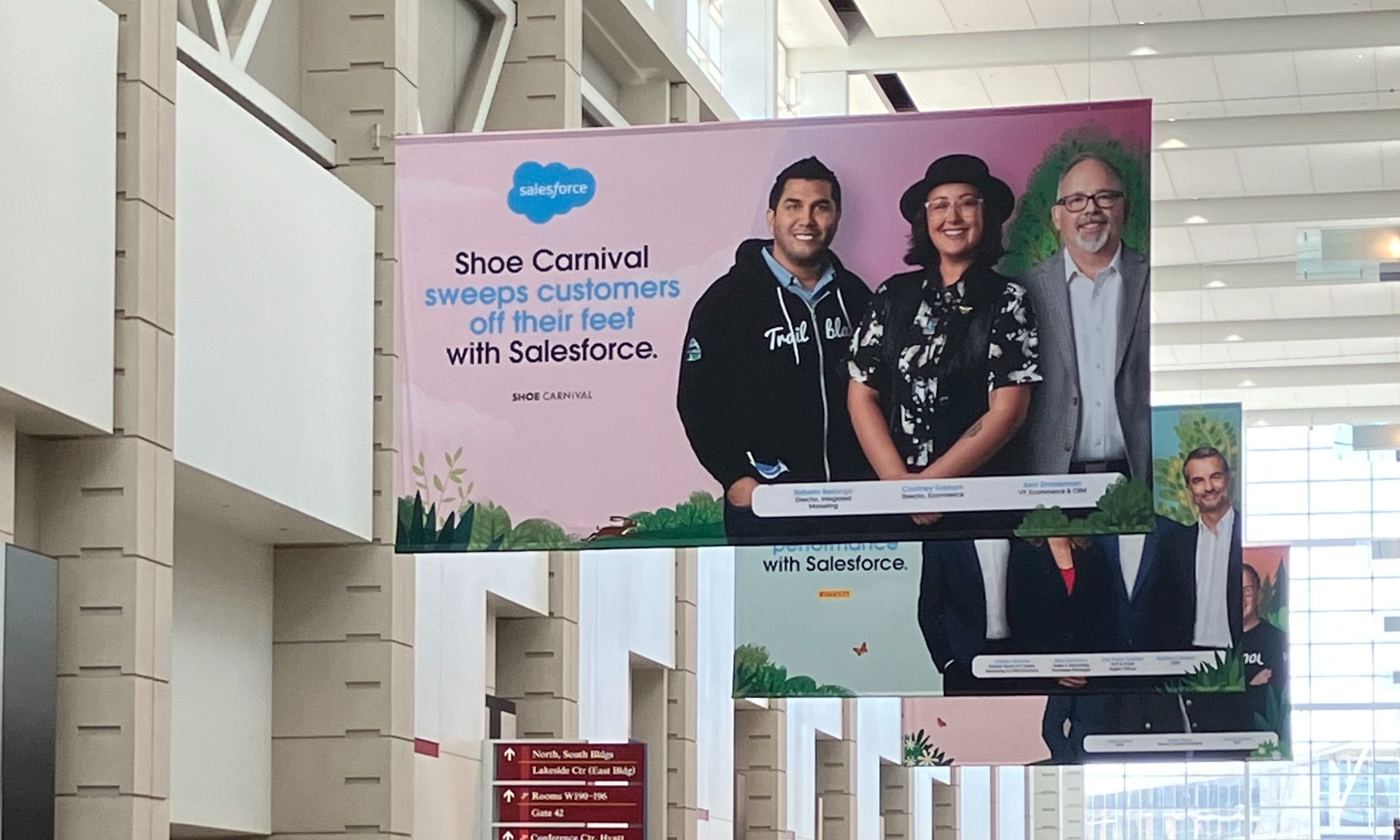
Salesforce launched a collection of new, generative AI-related products at Connections in Chicago this week. They included new Einstein Copilots for marketers and merchants and Einstein Personalization.
To better understand, not only the potential impact of the new products, but the evolving Salesforce architecture, we sat down with Bobby Jania, CMO, Marketing Cloud.
Dig deeper: Salesforce piles on the Einstein Copilots
Salesforce’s evolving architecture
It’s hard to deny that Salesforce likes coming up with new names for platforms and products (what happened to Customer 360?) and this can sometimes make the observer wonder if something is brand new, or old but with a brand new name. In particular, what exactly is Einstein 1 and how is it related to Salesforce Data Cloud?
“Data Cloud is built on the Einstein 1 platform,” Jania explained. “The Einstein 1 platform is our entire Salesforce platform and that includes products like Sales Cloud, Service Cloud — that it includes the original idea of Salesforce not just being in the cloud, but being multi-tenancy.”
Data Cloud — not an acquisition, of course — was built natively on that platform. It was the first product built on Hyperforce, Salesforce’s new cloud infrastructure architecture. “Since Data Cloud was on what we now call the Einstein 1 platform from Day One, it has always natively connected to, and been able to read anything in Sales Cloud, Service Cloud [and so on]. On top of that, we can now bring in, not only structured but unstructured data.”
That’s a significant progression from the position, several years ago, when Salesforce had stitched together a platform around various acquisitions (ExactTarget, for example) that didn’t necessarily talk to each other.
“At times, what we would do is have a kind of behind-the-scenes flow where data from one product could be moved into another product,” said Jania, “but in many of those cases the data would then be in both, whereas now the data is in Data Cloud. Tableau will run natively off Data Cloud; Commerce Cloud, Service Cloud, Marketing Cloud — they’re all going to the same operational customer profile.” They’re not copying the data from Data Cloud, Jania confirmed.
Another thing to know is tit’s possible for Salesforce customers to import their own datasets into Data Cloud. “We wanted to create a federated data model,” said Jania. “If you’re using Snowflake, for example, we more or less virtually sit on your data lake. The value we add is that we will look at all your data and help you form these operational customer profiles.”
Let’s learn more about Einstein Copilot
“Copilot means that I have an assistant with me in the tool where I need to be working that contextually knows what I am trying to do and helps me at every step of the process,” Jania said.
For marketers, this might begin with a campaign brief developed with Copilot’s assistance, the identification of an audience based on the brief, and then the development of email or other content. “What’s really cool is the idea of Einstein Studio where our customers will create actions [for Copilot] that we hadn’t even thought about.”
Here’s a key insight (back to nomenclature). We reported on Copilot for markets, Copilot for merchants, Copilot for shoppers. It turns out, however, that there is just one Copilot, Einstein Copilot, and these are use cases. “There’s just one Copilot, we just add these for a little clarity; we’re going to talk about marketing use cases, about shoppers’ use cases. These are actions for the marketing use cases we built out of the box; you can build your own.”
It’s surely going to take a little time for marketers to learn to work easily with Copilot. “There’s always time for adoption,” Jania agreed. “What is directly connected with this is, this is my ninth Connections and this one has the most hands-on training that I’ve seen since 2014 — and a lot of that is getting people using Data Cloud, using these tools rather than just being given a demo.”
What’s new about Einstein Personalization
Salesforce Einstein has been around since 2016 and many of the use cases seem to have involved personalization in various forms. What’s new?
“Einstein Personalization is a real-time decision engine and it’s going to choose next-best-action, next-best-offer. What is new is that it’s a service now that runs natively on top of Data Cloud.” A lot of real-time decision engines need their own set of data that might actually be a subset of data. “Einstein Personalization is going to look holistically at a customer and recommend a next-best-action that could be natively surfaced in Service Cloud, Sales Cloud or Marketing Cloud.”
Finally, trust
One feature of the presentations at Connections was the reassurance that, although public LLMs like ChatGPT could be selected for application to customer data, none of that data would be retained by the LLMs. Is this just a matter of written agreements? No, not just that, said Jania.
“In the Einstein Trust Layer, all of the data, when it connects to an LLM, runs through our gateway. If there was a prompt that had personally identifiable information — a credit card number, an email address — at a mimum, all that is stripped out. The LLMs do not store the output; we store the output for auditing back in Salesforce. Any output that comes back through our gateway is logged in our system; it runs through a toxicity model; and only at the end do we put PII data back into the answer. There are real pieces beyond a handshake that this data is safe.”
-
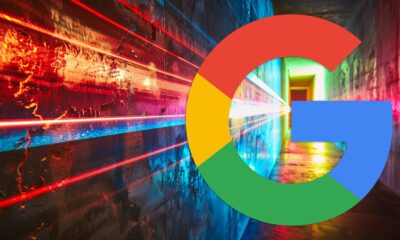
 SEARCHENGINES5 days ago
SEARCHENGINES5 days agoBillions Of Google goo.gl URLs To 404 In The Future
-
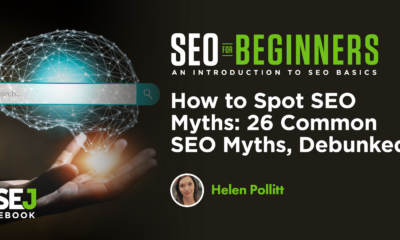
 SEO7 days ago
SEO7 days ago26 Common SEO Myths, Debunked
-
SEARCHENGINES4 days ago
Daily Search Forum Recap: July 22, 2024
-
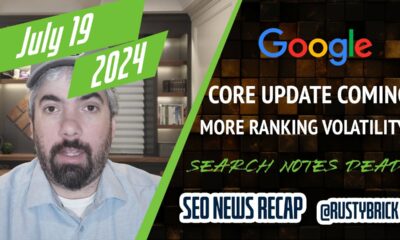
 SEARCHENGINES6 days ago
SEARCHENGINES6 days agoGoogle Core Update Coming, Ranking Volatility, Bye Search Notes, AI Overviews, Ads & More
-

 SEO5 days ago
SEO5 days ago11 Copyscape Alternatives To Check Plagiarism
-
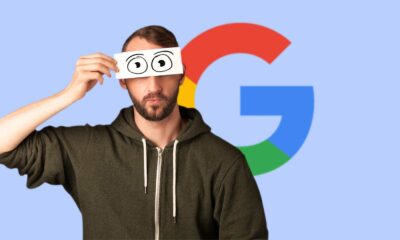
 SEO6 days ago
SEO6 days agoGoogle Warns Of Last Chance To Export Notes Search Data
-

 AFFILIATE MARKETING5 days ago
AFFILIATE MARKETING5 days agoThe Top 5 AI Tools That Can Revolutionize Your Workflow and Boost Productivity
-
SEARCHENGINES3 days ago
Daily Search Forum Recap: July 23, 2024







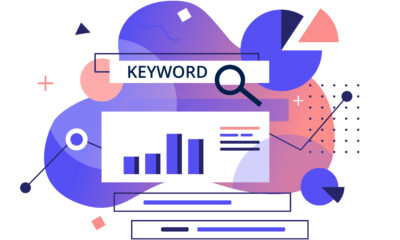

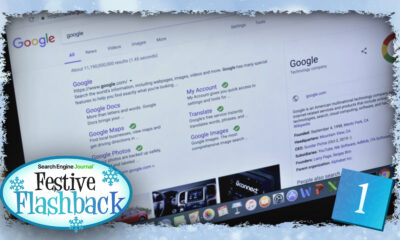

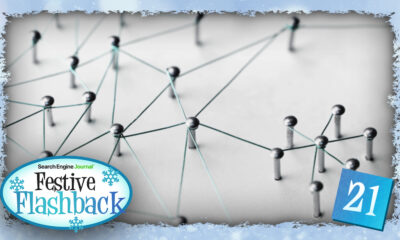

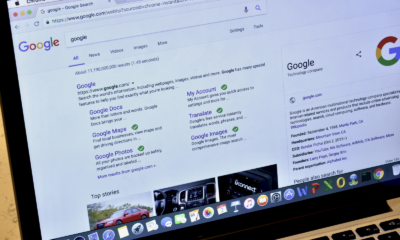



You must be logged in to post a comment Login